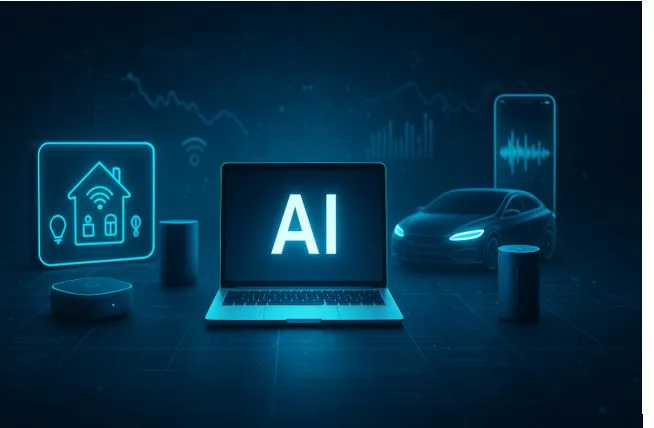The Rise of AI Personal Assistants in Daily Life
Artificial intelligence has quietly moved from science fiction into our kitchens, cars, and phones. The idea of having a digital companion that understands speech, schedules appointments, or adjusts room temperature used to sound futuristic. Now it’s routine. People interact with AI dozens of times a day without even noticing.
Voice assistants like Alexa, Siri, and Google Assistant were the first wave. They showed that natural conversation with a machine could be simple enough for everyday use. Then came smarter systems integrated into devices, apps, and even entertainment platforms. In games, for example, users might see chatbots helping with tips or bonuses, or stumble upon sites offering free slots 777 where AI recommends games based on user habits.
Everyday Integration
The scale of AI adoption is staggering. According to Statista, over 4.2 billion digital voice assistants are active worldwide in 2025. Most users rely on them to handle reminders, manage playlists, or check weather forecasts. Smart speakers now double as home hubs, connecting lights, thermostats, and locks into one responsive ecosystem.
Smart homes go beyond convenience. They help save energy and improve safety. For instance, Nest thermostats use AI to learn daily routines, reducing power use by up to 15%. Home security systems recognize familiar faces and alert owners about unexpected visitors. Even refrigerators track expiry dates and generate shopping lists automatically.
Here’s how people typically use AI assistants at home:
- Adjusting lighting, temperature, and blinds with voice commands.
- Creating shared grocery lists or reminders for family members.
- Streaming music or podcasts across rooms without lifting a finger.
- Monitoring air quality and controlling purifiers automatically.
Each of these functions saves time, but also builds a sense of comfort. The technology fades into the background, working almost invisibly.
Smarter Mobility
Cars have become one of the most active testing grounds for AI. Modern vehicles recognize voice commands, suggest routes based on traffic data, and even detect driver fatigue. Tesla’s Autopilot and Mercedes’ MBUX systems are prime examples of how automation meets personal assistance. Drivers no longer just navigate; they communicate with their cars.
AI also makes road trips safer. Lane-keeping systems predict drifts before they happen. Sensors learn driving patterns, alerting drivers when their attention slips. According to the European Automobile Manufacturers Association, over 80% of new cars sold in 2025 include some form of AI-powered assistance.
Examples of practical use:
- Predictive navigation suggesting the fastest routes.
- Voice-controlled climate settings and infotainment.
- Real-time alerts about nearby hazards or road closures.
- Automatic parking and adaptive cruise control.
In essence, vehicles are learning to anticipate human needs, not just respond to them.
ChatGPT and Everyday Apps
ChatGPT-style systems have taken personalization to a new level. They learn from text patterns, conversations, and user preferences. This allows them to draft messages, summarize documents, or generate ideas on the fly. In 2025, many productivity tools, from email clients to note-taking apps, integrate AI chat interfaces directly.
For example, Microsoft’s Copilot and Google’s Gemini integrate conversational AI into documents, slides, and spreadsheets. You can ask for a summary, rewrite a paragraph, or get quick calculations without switching tools. These assistants are not replacements for human judgment, but extensions of it.
AI now shapes entertainment too. Streaming platforms like Netflix or Spotify use recommendation algorithms that improve with every click and skip. Over time, they understand a person’s mood or taste better than a friend might.
What It Means for Everyday Users
The rise of AI personal assistants doesn’t mean losing control. Instead, it means redistributing effort. Machines handle repetitive tasks, freeing time for decisions that matter. That shift explains why users tend to adopt AI quickly once they see tangible value.
A few principles help make the most of it:
- Keep privacy settings clear. Know what data the system collects.
- Use automation where it reduces effort, not where it adds complexity.
- Combine manual control with AI guidance for best results.
The more familiar people become with these assistants, the more natural the interaction feels. AI blends into daily life, not as a novelty but as a quiet partner that simplifies routines. From turning on lights to suggesting routes or summarizing notes, it’s less about technology itself and more about what it allows people to do with ease.






